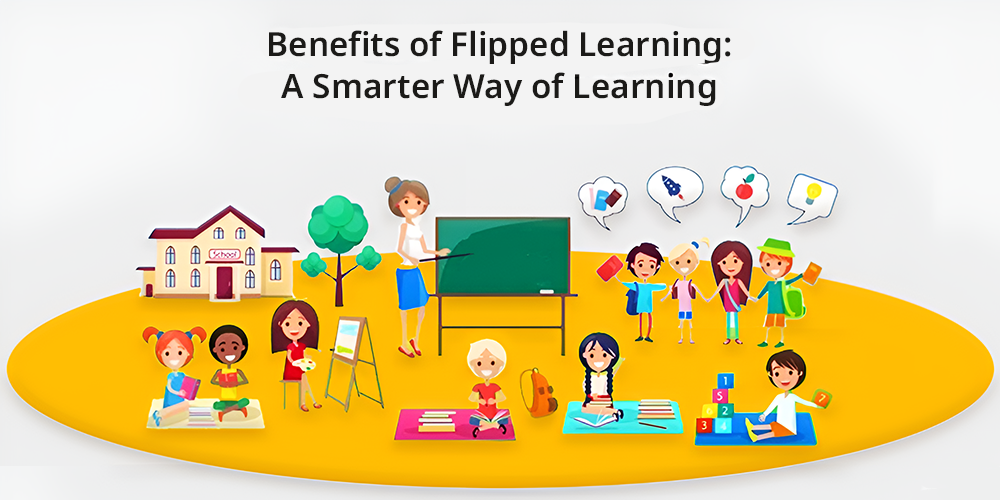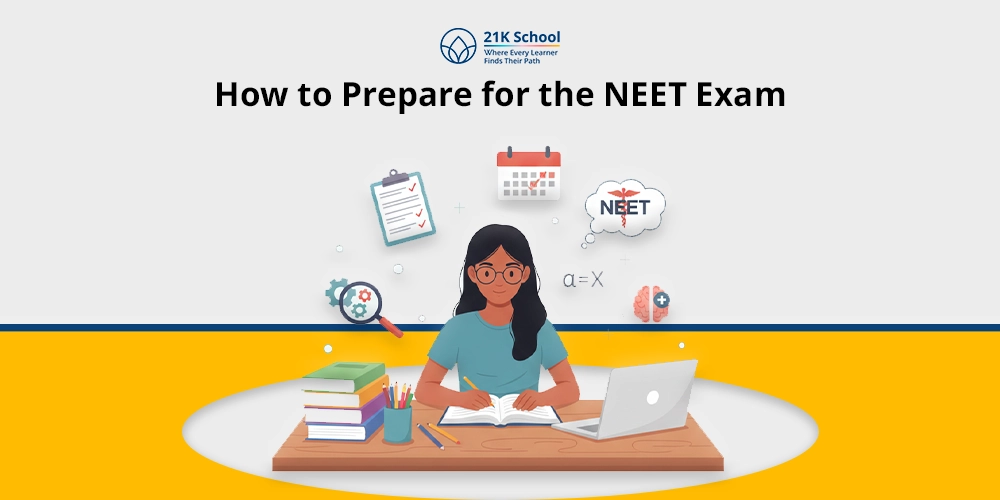
In this fast moving world, education is all about learning in an engaging way. The traditional methods of education are unable to meet needs.
The requirements of learning are dynamic especially for 21st century learners. Have you ever heard of flipped learning?
If not, it is high time to know the kinds of education kids need, especially in the 21st century. Flipped learning is one of them.
It has various advantages, from enhancing student engagement, promoting self-directed learning, to fostering deeper understanding through active learning activities.
Here we will understand the benefits of flipped learning for both students and teachers. Let’s begin!
What is Flipped Learning?
Flipped learning refers to the instructional strategy of teaching which reverses the traditional learning environment.
Here students first engage with learning materials, like lectures or readings, outside of class. Then utilize class time for activities, discussions and problem-solving.
This concept is ideal because instead of introducing new education techniques teachers can support students by reversing the environment.
This will help students become active participants in both classroom and outside. It’s time to make the environment fun and useful.
Benefits of Flipped Learning
Flipped Learning has lots of advantages, from enhancing student engagement, promoting self-directed learning, and fostering deeper understanding through active learning activities.
It is also motivated for personalized learning and increases student-teacher interactions.
For Students:
1. Flexibility in Learning Pace
Flipped learning is the best approach for flexibility in learning pace. It empowers students to learn in their own way, rhythm and revisit material as needed.
While in a traditional classroom where uniform pace is used is not ideal for all students especially when inclusive education takes place.
But now students can use materials and engage with them outside of class.
2. Self-Directed Learning
Flipped learning promotes self-directed learning by focusing on student engagement. It helps students to learn at their own pace.
By taking responsibility for their learning and developing independent learning skills, flipped classroom approaches provide immense opportunities.
This change improves lifelong learning habits, empower students to find solutions independently and understand how they learn effectively.
3. Personalized Learning
Personalized learning is an educational approach which adapts instruction to meet the needs, strengths, and interests of each student.
Wanted to know more about personalised learning then learn 5 benefits of personalized learning.
It has various advantages to personalised learning. Students can learn in their own way, revisiting material as needed to fully grasp concepts.
4. Increased Student Engagement and Motivation
Inverted learning directly helps in student engagement and motivation. This interactive learning environment increases confidence in both the classroom and outside world.
This encourages students to learn in their own way and deepen their understanding with teacher support, leading to more active participation and enhanced critical thinking.
5. Enhanced Comprehension and Retention
As per research it enhances comprehension and students retention. This happens by active learning activities, and receiving personalized feedback.
This leads to deeper understanding and improved memory. It’s time to empower education with visual, auditory, and kinesthetic learning styles.
Now, students can understand and remember everything taught in class in a better way.
6. Development of Critical Thinking and Problem-Solving Skills
By shifting instructions in the classroom and outside, this kind of learning developed critical thinking and problem solving skills.
To improve kids skills must read how to develop critical thinking skills in students.
The approach opens new opportunities for deeper understanding and application. Now students can engage in high order thinking tasks.
7. More One-on-One Time with Teachers
Flipped learning promotes student-teacher relationships by providing more one on one time with teachers.
This allows teachers to understand each individual’s needs, provide personalized guidance, and clarify concepts in a more tailored manner.
8. Enhanced Collaboration
Inverted learning enhances collaboration by converting traditional classroom structures.
Interactive activities such as group projects and peer-to-peer learning will enhance teamwork, communication skills, and collaboration between students.
This highlights personalized attention and tailored instruction, building stronger relationships between teachers and students.
9. Improved Academic Performance
Flipped learning encourages deeper understanding, active learning, and personalized learning experiences which directly improve academic performance of students.
Having better test scores and student outcomes is the ultimate goal of education.
For Teachers:
1. More Time for Personalized Instruction
Flipped learning is ideal for teachers to have more time helping students by personalized instruction.
Instead of using class time to give lectures, students do other activities like watch videos or read lessons at home.
This helps classroom time for teachers to engage with students individually, provide designed support, and facilitate collaborative learning activities.
2. Opportunities for Professional Development
Flipped learning beneficial for both students and teachers, including opportunities for professional development.
This gives educators a new way of thinking by shifting the focus from instructions to students learning, creating a more personalized and engaging classroom environment.
3. Easy Differentiate Instruction
These days students learn the lesson at home first, and then use class time to do fun, hands-on activities.
This benefits differentiated instruction by providing more opportunities for individualized learning and teacher support.
4. Efficient Use of Classroom Time
Flipped learning means efficient use of classroom time by reversing the students classroom and outside activities.
This provides more individualized support and facilitates deeper learning experiences instead of traditional teaching.
5. Improved Student-Teacher Relationships
For more personalized interactions and creating a more collaborative learning environment it improves student teacher relationships.
The approach is ideal for encouraging open communication between teachers and students.
6. Increased Work Flexibility in Teaching
Flipped learning increased work flexibility for teachers by shifting the focus from traditional lectures to engaging and interactive classroom activities.
This directly helps teachers to better manage their workload and provide individualized support.
7. Continuous Assessment and Feedback
By shifting the focus from passive listening to active engagement blended learning coupled with continuous assessment and feedback.
Continuous assessment includes real-time feedback, enabling both students and teachers to identify learning gaps and adjust strategies accordingly.
This kind of learning offers personalized instruction, improved student comprehension, and enhanced critical thinking skills.
8. Improved Job Satisfaction and Motivation
Inverted learning improved teachers’ job satisfaction and motivated them for better performance. By offering a more engaging and effective learning experience for both teachers and students.
The approach not only satisfies teachers but also supports and collaborates for positive enforcement.
9. Focus on Active Learning and Higher-Order Thinking Skills
Flipped learning promotes active learning and higher-order thinking skills.
This happens by shifting lecture material to outside class time, freeing up class time for engaging activities and deeper understanding.
This improves creative thinking skills, problem solving skills and critical thinking.
Conclusion
Flipped learning is not an educational buzz; it is a strategic shift that aligns with the evolving demands of 21st century students and teachers.
By making students and their learning more engaging it also focuses on teachers’ interaction, critical thinking, and individual growth.
It is a smart and more responsive educational approach. In the world of development, adaptability and creative collaboration it is vital.
It’s time to flip the mindsets by creating a right environment for everyone. To know more about modern teaching techniques visit the 21K School blog section.


